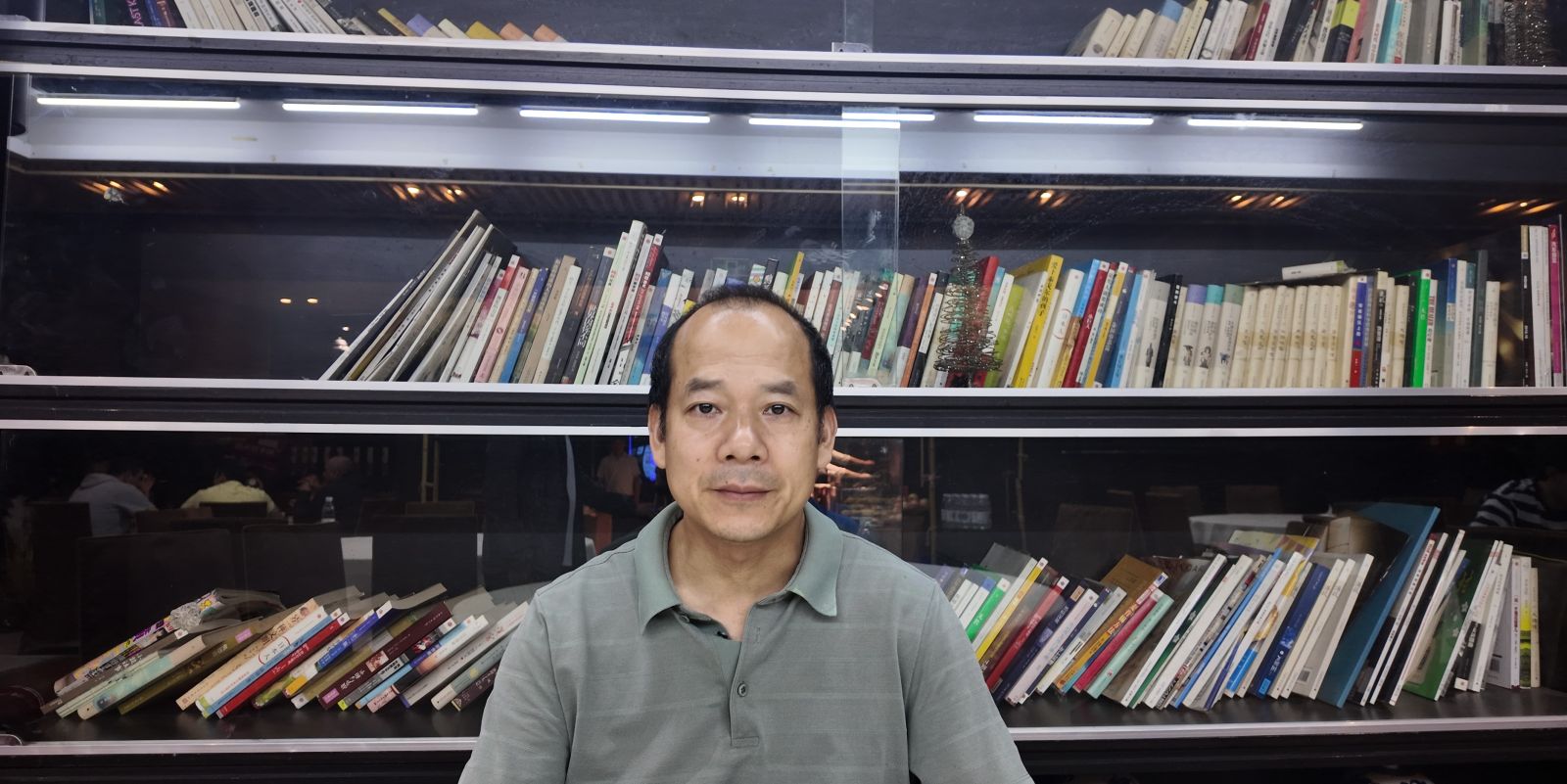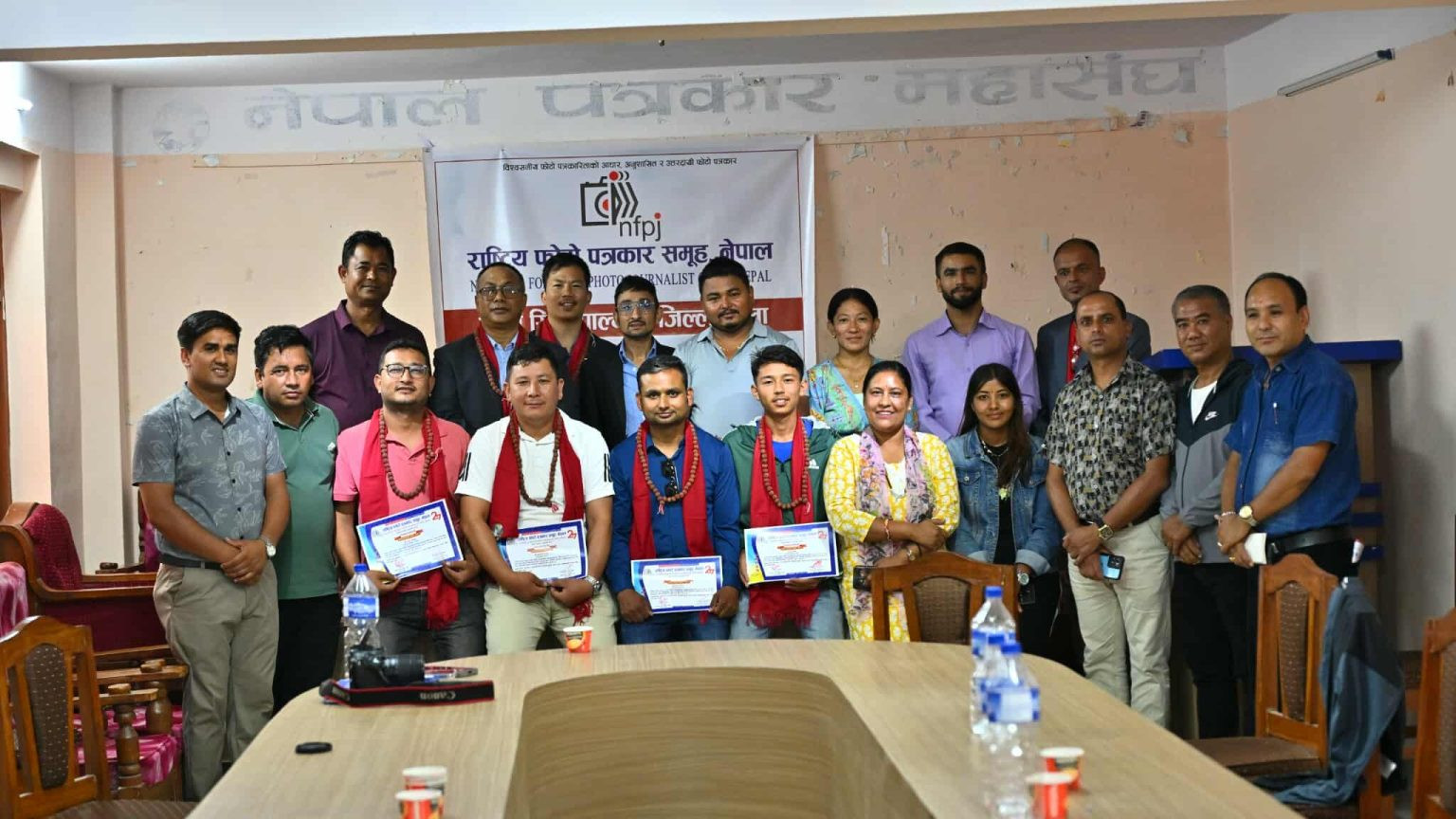We’re Not Just Neighbors, We’re Partners in Progress : Professor Tao
Together, we’re not just neighbors—we’re partners in progress. Let’s strengthen these pillars of friendship to build a future where knowledge, innovation, and mutual respect light our way.

Professor Tao Zhiyong, President of the Wuhan Institute of Posts and Telecommunications Company Limited in China, is a distinguished expert in the field of Information and Communication Technology (ICT). With over 20 years of experience in the ICT sector, he possesses extensive expertise in the evaluation, implementation, and management of capacity development projects.
A leading figure in academic research and ICT studies, Professor Tao has been teaching postgraduate-level courses since 2013. He has authored five books and published more than 20 research papers. Since 2002, he has led fiber-optic communication projects in multiple countries, including Indonesia, Thailand, and Russia.
With support from China’s Ministry of Industry and Information Technology, the Ministry of Commerce, and the Asia-Pacific Telecommunity, Professor Tao has trained over 5,000 professionals from developing countries across the Asia-Pacific, Africa, and Latin America. He has also organized and conducted more than 100 international training programs.
Currently, Professor Tao serves as a professor and Executive Director of the National Academy of Excellent Engineers at CICT. Since 2013, he has also held the position of Director of the Postgraduate Education Department at the institute. Additionally, he is a senior member of the China Communications Enterprise Association.
The Wuhan Institute of Posts and Telecommunications (FiberHome Technology Group) is one of the two major research institutions directly operated under China’s former Ministry of Posts and Telecommunications, now under the Ministry of Industry and Information Technology. It also functions as a communications training center for the Asia-Pacific Telecommunity. The institute is among the first in China authorized to confer master’s degrees in engineering and is recognized as a leading institution for training top-tier engineers under the National Excellent Engineer Academy program.
The full transcript of the interview with Professor Tao Zhiyong, conducted in Wuhan by Rajesh Rai, Editor-in-Chief of Nayapage.com, is presented below.
.jpg)
Wuhan is often linked to the early days of the COVID-19 outbreak, but the city has a rich history and a dynamic identity that extends far beyond that period. How would you describe the true essence of Wuhan, and how should the international community perceive the city today?
- Wuhan, a city often associated with the COVID-19 pandemic, is far more than a historical footnote or a symbol of global health challenges. Today, it stands as a vibrant metropolis that harmoniously blends ancient heritage, natural beauty, and cutting-edge innovation. Here’s how the international community should understand its true essence:
1. A City Steeped in History and Culture
Wuhan’s history spans over 3,500 years, rooted in the Shang Dynasty’s Panlongcheng—the earliest urban center in the Yangtze River Basin and a hub of bronze civilization. As a cradle of Chu culture, it was the stage for legendary stories like the friendship between Yu Boya and Zhong Ziqi, immortalized in the "High Mountains and Flowing Waters" tale, which continues to inspire cultural events like the annual Qintai Music Festival. The Yellow Crane Tower, originally a military watchtower from the Three Kingdoms period, later became a poetic muse for Tang Dynasty literati like Li Bai, earning Wuhan the nickname "River City" . Additionally, Wuhan’s role in modern history—such as the 1911 Wuchang Uprising that ended imperial China—cements its identity as a "Heroic City".
2. A Natural Wonderland with Romantic Charm
Dubbed the "City of a Hundred Lakes," Wuhan is interlaced with 166 lakes and 165 rivers, including the Yangtze and Han Rivers, which converge at its heart. The East Lake Greenway, the world’s longest urban lakeside trail, and the iconic Wuhan Yangtze River Bridge offer breathtaking vistas and recreational spaces. Every spring, cherry blossoms transform the city into a pink-hued paradise, drawing visitors to spots like East Lake Cherry Garden and Wuhan University. The city’s romantic spirit is further embodied in cultural landmarks like the "Zhiyinhao" cruise, which reenacts 1920s Wuhan through immersive theater.
Today, it stands as a vibrant metropolis that harmoniously blends ancient heritage, natural beauty, and cutting-edge innovation. Here’s how the international community should understand its true essence:
3. A Hub of Innovation and Economic Dynamism
Wuhan is a powerhouse of education and technology, home to 92 universities and over 1.3 million college students—the highest concentration globally. Its East Lake High-Tech Zone (Optics Valley) drives advancements in photonics, biomedicine, and AI, earning it a reputation as China’s "Silicon Valley of the East". Economically, Wuhan’s GDP reached 2.11 trillion yuan in 2024, ranking among China’s top 10 cities, while hosting 309 Fortune 500 companies. The city’s strategic location as a transportation hub—connecting major lines, international flights, and the Yangtze River shipping network—fuels its role in the Belt and Road Initiative.
4. A Culinary Capital and Melting Pot of Flavors
Known as the "Breakfast Capital of China," Wuhan’s street food culture is legendary. From hot dry noodles and savory soybean skin wraps to slow-simmered lotus root soup, the city’s culinary scene reflects its geographical diversity and cultural fusion. Neighborhoods like Hubu Lane and Wan Song Yuan buzz with night markets, where locals and tourists alike savor spicy crayfish and hearty dishes. This gastronomic richness mirrors Wuhan’s inclusive spirit, shaped by centuries of migration and trade.
5. A Resilient Metropolis Embracing the Future
Post-pandemic, Wuhan has emerged stronger, accelerating urban development through projects like the “Yangtze River Axis” —a blueprint for integrating ecological preservation with modern infrastructure—and the”Yangtze New City”, envisioned as a futuristic model of sustainable urbanism. The city’s commitment to green growth is evident in initiatives like the "10-kilometer flower belt" along the Yangtze River and sponge city projects to combat flooding. Internationally, Wuhan is building bridges—literally and figuratively—as seen in its world-leading bridge engineering showcased to global delegations, such as the Hungarian media group that marveled at its "miracle" infrastructure.
To understand Wuhan today is to recognize its duality: a guardian of ancient traditions and a trailblazer in modernity. While its history and resilience during the pandemic are part of its story, the city’s true identity lies in its dynamic culture, innovative spirit, and unyielding optimism. For the international community, Wuhan exemplifies how cities can honor their past while forging a sustainable, interconnected future. As a Hungarian journalist aptly noted after visiting: "You’ve turned miracles into reality".
Reflecting on the difficult period during the COVID-19 outbreak, how do you view Wuhan’s resilience and recovery? What progress has the city made since then?
During the challenging times of the COVID-19 pandemic, Wuhan faced immense difficulties starting in early 2020, Wuhan’s resilience emerged through the unity of its people—medical workers risking their lives, communities supporting one another, and global solidarity providing much-needed aid.
The city’s recovery demonstrated remarkable strength. After lifting the lockdown , Wuhan quickly shifted to rebuilding: revitalizing its economy, strengthening public health systems (like expanding infectious disease treatment capacities), and restoring social connections. Its resilience became a symbol of hope, showing how a city could rise from crisis through collective effort.
Since then, Wuhan has made significant progress. Economically, it bounced back swiftly, with its GDP returning to growth and key industries like automotive manufacturing and high-tech (centered in the Optics Valley) regaining momentum. The city also prioritized public health innovation, enhancing emergency response mechanisms and becoming a model for pandemic preparedness. Culturally and socially, Wuhan renewed its vibrancy—parks, markets, and cultural venues reopened, reflecting the resilience of its residents who refused to let the crisis define their home. Today, Wuhan stands as a testament to human endurance and the ability to transform adversity into renewal.
The Wuhan Research Institute of Posts and Telecommunications is recognized as a leading academic and research institution in China. Could you share some of its recent developments and key areas of focus?
- Wuhan Research Institute of Posts and Telecommunications (WRI), a key academic and research institution in China, has continued to advance cutting-edge technologies and strengthen its global influence in recent years. Here’s an overview of its recent developments and focus areas:
1. Breakthroughs in Optical Communication
WRI remains at the forefront of optical communication research. In 2024, its subsidiary Accelink Technologies unveiled a 1.6T silicon photonics module 12, a globally leading achievement that doubles transmission speed while reducing costs and energy consumption.
This innovation addresses the growing demand for high-speed connectivity in AI and data center networks. Additionally, the National Information Optoelectronics Innovation Center (NIOC), co-led by WRI, developed a 110 GHz electro-optic intensity modulator with internationally advanced performance 12, critical for next-generation optical devices.
2. 6G Research and Standardization.
As part of the China Information and Communication Technology Group (CITIC), WRI is actively shaping the future of 6G. It proposed the concept of "space-air-ground-sea integrated networks" 5, advocating for seamless integration of satellite and terrestrial communication to address coverage limitations. WRI has contributed over 15,000 5G standard proposals 5, with its patent portfolio ranking among the world’s top seven. Building on this foundation, it is now focusing on 6G use cases like immersive communication and AI-communication convergence 27, aligning with global standardization efforts led by 3GPP.
3. Quantum Communication Innovations
WRI has expanded into quantum technologies, filing a patent in 2024 for a multi-user TF-QKD network system 26. This system uses time-division multiplexing to enhance quantum key distribution efficiency over long distances, a critical step toward practical quantum secure communication. While not explicitly mentioned in the search results, WRI’s participation in Hubei’s first quantum industry fund 13 suggests ongoing collaboration in quantum R&D.
4. Patents and Standards Leadership
With over 34,000 patent applications (90% invention patents) and 71 223, WRI continues to influence global norms. In 2024, it contributed to updating the GB/T 15972.40-2024 national standard for optical fiber attenuation testing 30, ensuring alignment with international practices. Its involvement in ITU-T and IEEE standards committees underscores its role in shaping global communication frameworks.
5. Talent Development and Education
WRI operates the National Academy of Excellence for Engineers 23, collaborating with Huazhong University of Science and Technology and Wuhan University to train specialists in optical communication, integrated circuits, and cybersecurity. This initiative addresses critical talent gaps in China’s tech sector.
It's reported that your programs have trained over 10,000 professionals from more than 100 countries in information and communication technology. Could you elaborate on the core objectives driving these training initiatives?
- The core objectives of China’s information and communications technology (ICT) sector foreign aid training programs are deeply aligned with the Community of Shared Future for Mankind, aiming to bridge the global digital divide, empower developing nations through technology, and foster inclusive growth where communication transforms lives. China’s ICT foreign aid training is more than technical assistance.
It is a practical implementation of the Community of Shared Future.By prioritizing inclusion, collaboration, and sustainability.By prioritizing inclusion, collaboration, and sustainability, ensuring that the power of communication and technology is harnessed to elevate all nations.
Where does China currently stand on the global stage in terms of advancements in information and communication technology?
- China has emerged as a global leader in information and communication technology (ICT), driving innovation across critical domains and shaping the future of global tech ecosystems. Here’s a concise overview of its standing:
1. 5G and 6G Leadership
With 439.5 million 5G base stations (60% of the global total) and 900 million 5G users 4, China leads in 5G deployment and applications. It holds 40.3% of global 6G patents 5 .
2. Quantum Communication Breakthroughs
China achieved a 12,900-kilometer secure quantum communication link between China and South Africa in 2025 7, demonstrating its global leadership in quantum satellite technology. Its quantum network infrastructure, including the "Mozi" satellite and Beijing-Shanghai trunk line, paves the way for practical quantum secure communication systems .
3. AI and Digital Economy
The AI industry is projected to reach ¥398.5 billion (USD ~57.8 billion) by 2025, with applications spanning autonomous driving and smart manufacturing 14. China’s digital economy, valued at ¥53.9 trillion (USD ~7.8 trillion) in 2023 (42.8% of GDP), is fueled by e-commerce, mobile payments, and cloud computing 13. Cloud market growth remains robust, with projected ¥2.1 trillion (USD ~305 billion) by 2027.
4. Emerging Technologies
Blockchain: Applied in green energy trading (e.g., Shandong’s peer-to-peer renewable energy platforms) and digital identity systems 20.
Metaverse: The government’s Three-Year Action Plan (2023–2025) promotes industrial metaverse applications, with 3–5 global ecosystem leaders targeted by 2025.
AI Ethics: China released the world’s first AI Ethics White Paper in 2025, establishing principles for safe, equitable AI development.
As a close and strategic neighbor, how can Nepal leverage China’s significant advancements in information and communication technology to support its own digital transformation and development goals?
Nepal can leverage China’s ICT advancements to accelerate its digital transformation through strategic collaboration in key areas:
1. Infrastructure Development
Partner with Chinese firms to expand 5G/4G networks and fiber optic coverage, especially in remote regions, building on the existing China-Nepal cross-border optical cable project.
Utilize China’s expertise in satellite communication (e.g., BeiDou navigation) for disaster monitoring, rural connectivity, and precision agriculture, addressing Nepal’s geographical challenges.
2. Digital Economy & E-Governance
Adopt China’s mobile payment solutions (Alipay/WeChat Pay models) and e-commerce platforms to boost financial inclusion and small-business growth.
Learn from China’s e-government frameworks (e.g., “One Stop” service platforms) to streamline public service delivery, reducing bureaucracy and enhancing transparency
3. Tech Transfer & Talent Collaboration
Establish joint R&D centers with Chinese institutions (e.g., Wuhan Research Institute of Posts and Telecommunications) for training in optical communication, AI, and smart city technologies.
4. Cross-Border Digital Integration
Strengthen digital connectivity under the Belt and Road Initiative, facilitating seamless data flow for trade, tourism, and cross-border e-commerce, aligning with Nepal’s goal to become a “transit hub” between China and South Asia.
Participate in China’s global standards initiatives (e.g., 6G, RISC-V) to avoid technological isolation and access cutting-edge innovations at reduced costs.
How many Nepali students have participated in your programs so far? Are there any future plans to expand collaboration or engagement with Nepal in the field of ICT education and training?
- Since 2011, our foreign aid training has included around 120 Nepalese students. We will continue to cooperate with Nepal in the field of ICT education and training on the basis of friendly relations between the two countries in the future.

With over 80 higher education institutions in Wuhan, what opportunities exist for international students—particularly those from Nepal—who wish to pursue studies in information and communication technology?
- Wuhan’s universities provide a wide range of ICT-focused undergraduate, master’s, and doctoral programs taught in English or Chinese, aligned with global industry trends. Key areas of study include:
5G Technology & Telecommunications: Programs at Wuhan University of Technology (WUT) and Huazhong University of Science and Technology (HUST) explore 5G network design, wireless communication, and mobile computing.
Artificial Intelligence (AI) & Big Data: HUST and Wuhan University (WHU) offer specialized tracks in machine learning, data analytics, and AI applications in smart cities.
Cybersecurity & Blockchain: Zhongnan University of Economics and Law (ZUEL) and Wuhan Institute of Technology (WIT) provide courses on cyber defense, cryptography, and blockchain technology.
Internet of Things (IoT) & Cloud Computing: Wuhan University of Science and Technology (WUST) offers programs integrating IoT design with cloud infrastructure managemen
We are jointly organizing a communication technology training program with Huazhong University of Science and Technology, and welcome students from Nepal to register.
With participants from around the world attending this event focused on cybersecurity, how do you view the global significance of cybersecurity today, and what role does international collaboration play in addressing emerging digital threats?
- Cybersecurity holds immense global significance in today’s interconnected world, serving as a cornerstone for protecting critical infrastructure, personal data, and the integrity of digital systems that underpin economies, governments, and societies.
As cyber threats grow more sophisticated—ranging from ransomware and state-sponsored attacks to data breaches and AI-driven exploits—they transcend national borders, impacting individuals and nations alike. The global nature of these threats necessitates a unified response, as no single country can effectively combat them in isolation.
International collaboration plays a pivotal role in addressing emerging digital risks. It fosters the sharing of threat intelligence, harmonizes standards and best practices, and facilitates joint research to develop robust .
International collaboration plays a pivotal role in addressing emerging digital risks. It fosters the sharing of threat intelligence, harmonizes standards and best practices, and facilitates joint research to develop robust . For instance, partnerships enable countries to coordinate cross-border investigations into cybercrime, establish emergency response mechanisms, and build capacity in developing nations to strengthen their cybersecurity frameworks. Such cooperation also promotes dialogue on ethical guidelines for emerging technologies like AI and quantum computing, which could exacerbate cyber vulnerabilities if misused.Moreover, collaborative efforts align with the vision of a "community with a shared future for mankind," emphasizing that global security and prosperity are interdependent. By working together, nations can bridge the digital divide in cybersecurity capabilities, ensuring that advancements in information and communication technology (ICT) benefit all rather than leaving vulnerable states exposed.
This collective approach not only mitigates immediate threats but also lays the groundwork for a more resilient, inclusive digital ecosystem—one where innovation coexists with security, and where the promise of "communication changing lives" is safeguarded for future generations.
Finally, what message would you like to share with the people of Nepal, particularly in the context of fostering stronger educational, technological, and cultural ties between our two countries?
- As close strategic neighbors and partners, let us celebrate the bonds that unite our nations and envision a future of shared growth in education, technology, and culture!
Education: Cultivating Minds, Building Futures
Scholarships & Exchanges: More Chinese universities offer scholarships for Nepali students, from language programs to STEM fields. Let’s expand student exchanges and joint research—because learning together bridges hearts and fuels innovation.
Global Citizenship: Through collaborative projects (e.g., youth summits on climate action), we nurture leaders who understand both our rich heritages and global challenges.
Technology: Empowering Progress, Hand in Hand
Digital Collaboration: China is ready to share expertise in 5G, renewable energy tech, and smart agriculture—helping Nepal build a resilient digital infrastructure, from Kathmandu’s smart cities to rural connectivity.
Innovation Hubs: Let’s create joint tech labs and startups, turning ideas into solutions that improve daily life—whether through affordable healthcare apps or climate-smart tools for farmers.
Together, we’re not just neighbors—we’re partners in progress. Let’s strengthen these pillars of friendship to build a future where knowledge, innovation, and mutual respect light our way.


.png)










2024-10-01-23-06-38.jpg)